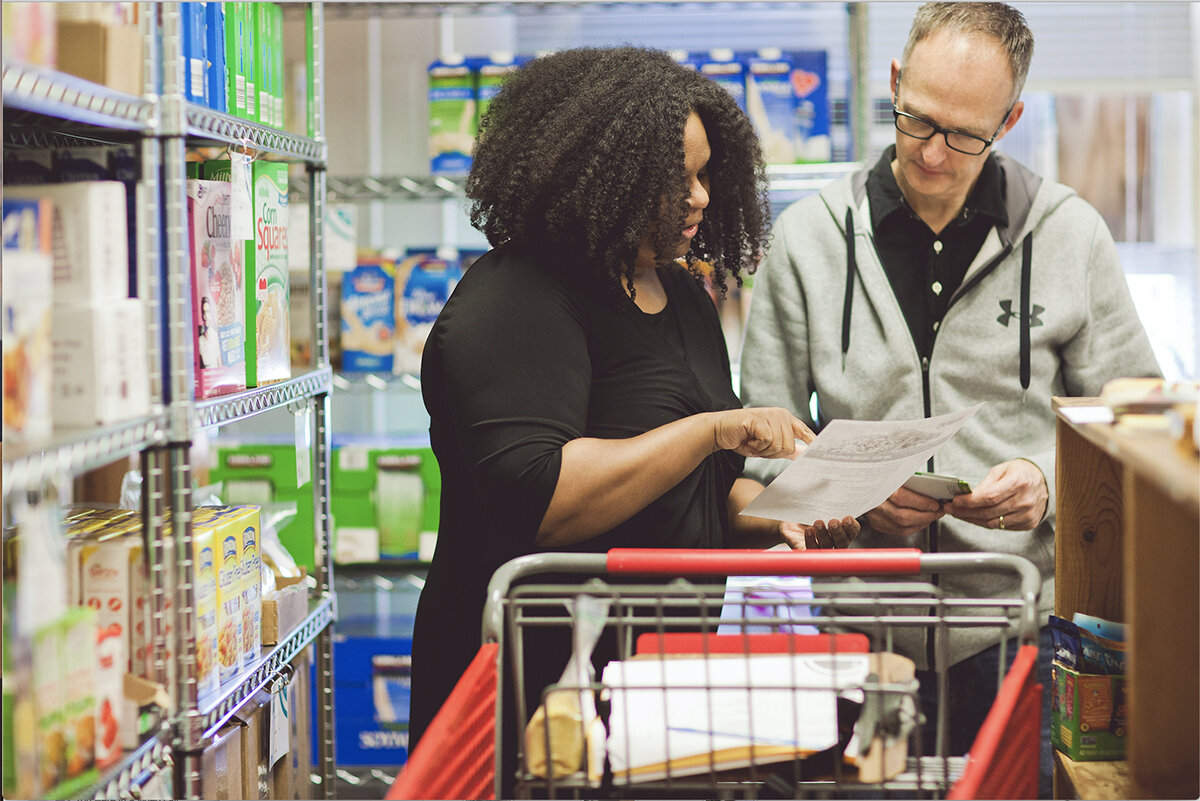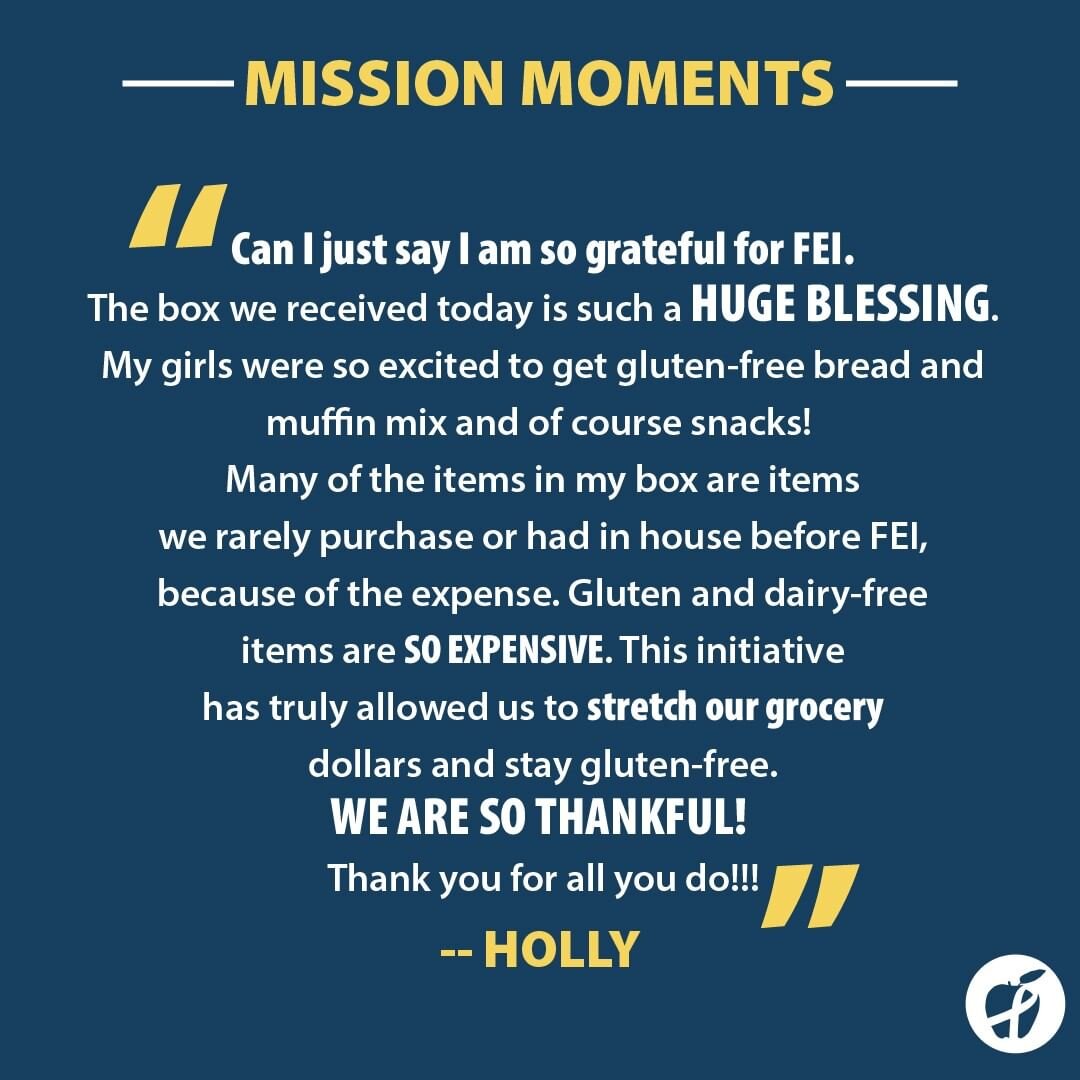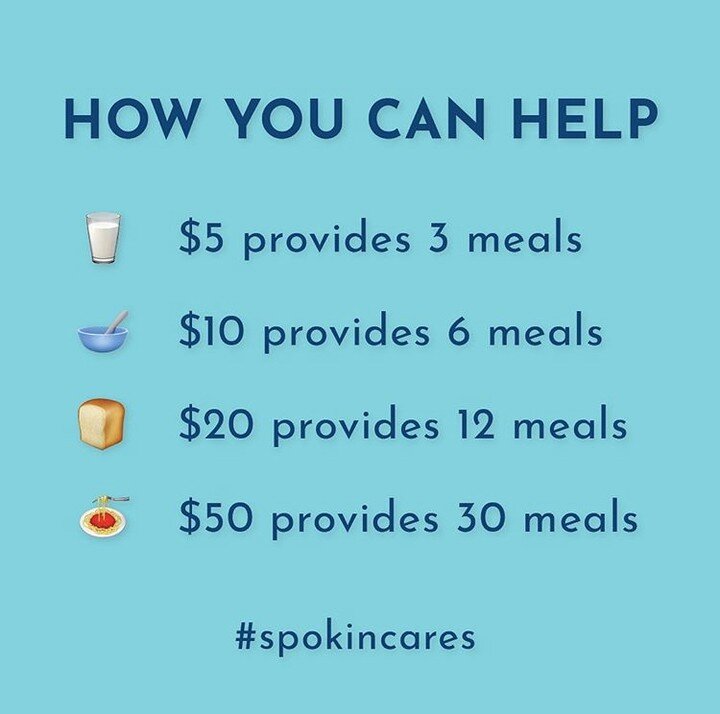Emily Brown Is Teaching The World How To Take Food Allergies Seriously
by The Candidly Team
With record unemployment and a growing wealth gap, more Americans are facing food insecurity— meaning, they’re suffering from a lack of access to good, healthy food.
This food insecurity has put enormous pressure on our already-strained food banks, leading people with food allergies to have fewer safe, healthy options than ever.
So we sought out the expertise of Emily Brown, founder and CEO of the Food Equality Initiative, a non-profit dedicated to improving the health of people with food allergies, and to increasing access to allergy-friendly and gluten-free foods.
We asked her about food allergies in the time of COVID-19, food insecurity, emerging allergy treatments, and how we can help.
Q: Why did you devote your life to this?
Emily Brown: My work comes from lived experience. My oldest daughter was diagnosed with multiple food allergies at the age of one. She was allergic to milk, eggs, wheat, soy, and peanuts. The grocery budget quadrupled overnight and my family found it difficult to afford safe and healthy foods.
Quickly, I realized the foods we needed were not widely available in federal nutrition programs.
Then I went to a local food pantry and could only find two potatoes and a jar of salsa that did not contain the allergens we were avoiding.
For me, this was an unmet medical need and I knew we were not the only family navigating this challenge.
I’ve devoted my life to this work because I know the feeling of being a mother with sick children and limited resources. I don’t want anyone else to experience the hopelessness that once felt.
Q: Why is the public still so dismissive of serious food allergies? Why is this dangerous?
EB: Food allergies, in many ways, are an invisible condition. For the most part, individuals with food allergies are healthy. I think this contributes to others not really understanding the burden of the disease.
I often say that we understand the impact of a cancer diagnosis on a family. We know that it will have a significant impact on the quality of life of the patient and caregivers. However, food allergies also have a significant burden and impact on one’s quality of life.
Q: How close are we to developing a vaccine for food allergies?
EB: There are several emerging treatments for food allergies, but I think we’re still a long way off from a vaccine or cure.
Q: What do you think about allergen immunotherapy? Does it work? Is it safe for kids?
EB: The FDA recently approved the first drug for peanut oral immunotherapy. While it’s not a cure, the new drug offers the opportunity for patients to be desensitized from their allergen. It’s approved for use in children age 4 to 17.
Q: Are there any legitimate products that can test food for traces of allergies in a way that’s actually usable and pragmatic for the average consumer? Or is that on its way?
EB: There is a product on the market that tests for gluten in foods. I know similar products are being developed for other food allergies, but I have not used any of them and cannot speak to their effectiveness.
Q: You’ve said that of the 60,000 food pantries in the US, only 4 accommodate allergies. Why is it so hard to find allergen-free food at food pantries? Why is this devastating to people who rely on food pantries?
EB: The food banking system was not designed to meet the needs of individuals with food allergies or other special dietary needs.
The system primarily provides emergency food assistance. While many food banks and food pantries have been more conscious of the impact of the food they provide and look for healthier options, allergen-free food is still seen as a dietary choice, rather than a necessity.
Unfortunately, people who are in need in this country are given few choices.
One recent study suggested that children with food allergies, who live in food-insecure households and rely on nutrition assistance programs, are at increased risk of exposure to food allergens and have more frequent life-threatening reactions.
Q: How do food allergies specifically affect underserved communities? How are we failing to protect these communities?
EB: Food allergies impact all people and socioeconomic groups.
However, underserved communities managing food allergies often lack voice, visibility, and resources. This leads to poor health outcomes that manifest in frequent severe reactions and poor quality of life.
We are failing these communities in many ways. Systemic barriers often reinforce inequality.
For example, patients who are on Medicaid often find it difficult to access specialty care. I’ve experienced this with my children. There is only one allergy clinic available and the wait for a new patient appointment can be three-to-six months. If you have commercial insurance, you can usually see a specialist within a few days.
Q: In what ways does the government fail to protect people with food allergies? What could it be doing better?
EB: There are many federal programs designed to protect vulnerable families.
However, many of these programs are often difficult for families with food allergies to navigate and access.
The Food and Nutrition Services, a department of the USDA can set guidelines that are more flexible and meet the needs of families with special diets. The FDA can strengthen food labeling laws and add sesame as the ninth labeled allergen.
Finally, there is still a lot we don’t know about food allergies. The federal government can increase funding for food allergy research to improve the lives of 32 million Americans impacted by the disease.
Q: How do we make healthy food, and specifically allergen-free foods, more widely available for all communities?
EB: We need to recognize that access to allergen-free foods is a medical need for individuals with food allergies.
Having the right foods at the right time can improve the health and wellness of individuals. One solution is to provide a monthly allowance of allergen-free food through HSA’s or as a covered benefit through insurance.
Q: How has this pandemic made matters worse for food pantries and people with food allergies?
EB: The COVID-19 pandemic has increased food insecurity.
With record unemployment, food insecurity has more than doubled. In 2018, food insecurity was around 11%. Now the number of American households experiencing food insecurity is estimated to be between 22%-38%.
Many food pantries and food banks are operating with pandemic protocols. With limited volunteer support and increased demands, many food pantries have been pushed to the brink.
Pre-packed boxes and drive thru pick-up have made it difficult for families managing food allergies and food insecurity to find safe food.
Q: In May, the FDA relaxed food-labelling standards. Why? How is this decision potentially disastrous for people with food allergies?
EB: The FDA guidance was a response to supply chain challenges associated with the pandemic. But all Americans need to know with certainty what is in their food, especially food allergy families. It is a matter of life and death.
The new guidance is problematic because it undermines the trust of consumers in the safety of packaged foods. The Food Equality Initiative worked with a number of food allergy organizations to petition the rule change and encourage manufactures to announce any recipe changes to the public.
Q: What are new, relatively-unknown, practical tips for parents dealing with kids with life threatening allergies, besides all the known ones (like EpiPens, getting to know specific restaurants, bringing snacks, checking labels)?
EB: My kids are now 6 and 8. As they grow, I think it is really important to empower children with food allergies to be their own advocate. I know I won’t always be around.
Practice different scenarios with your child so that they know how to respond in different situations, like learning how to speak up about their food allergies at school or with friends.
Q: How can we help? Is there anyone we can call to demand that better practices are widely adopted by food pantries and restaurants?
EB: Support organizations who are committed to serving families with food allergies.
These organizations have procurement dollars dedicated to supporting families with food allergies and have the policies and procedures to make sure it gets to a food allergy family.
Here are a few I recommend, including my own organization:










